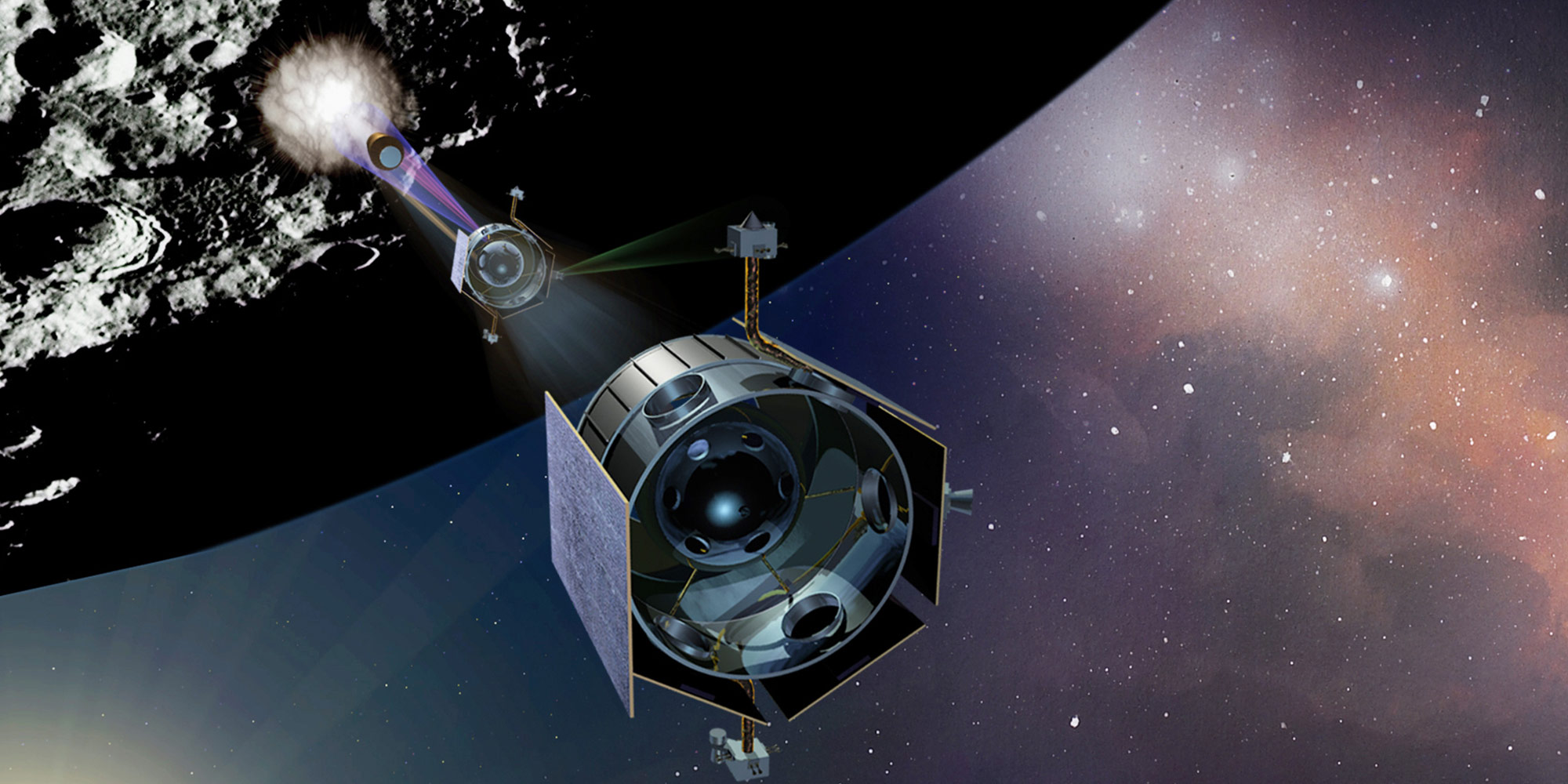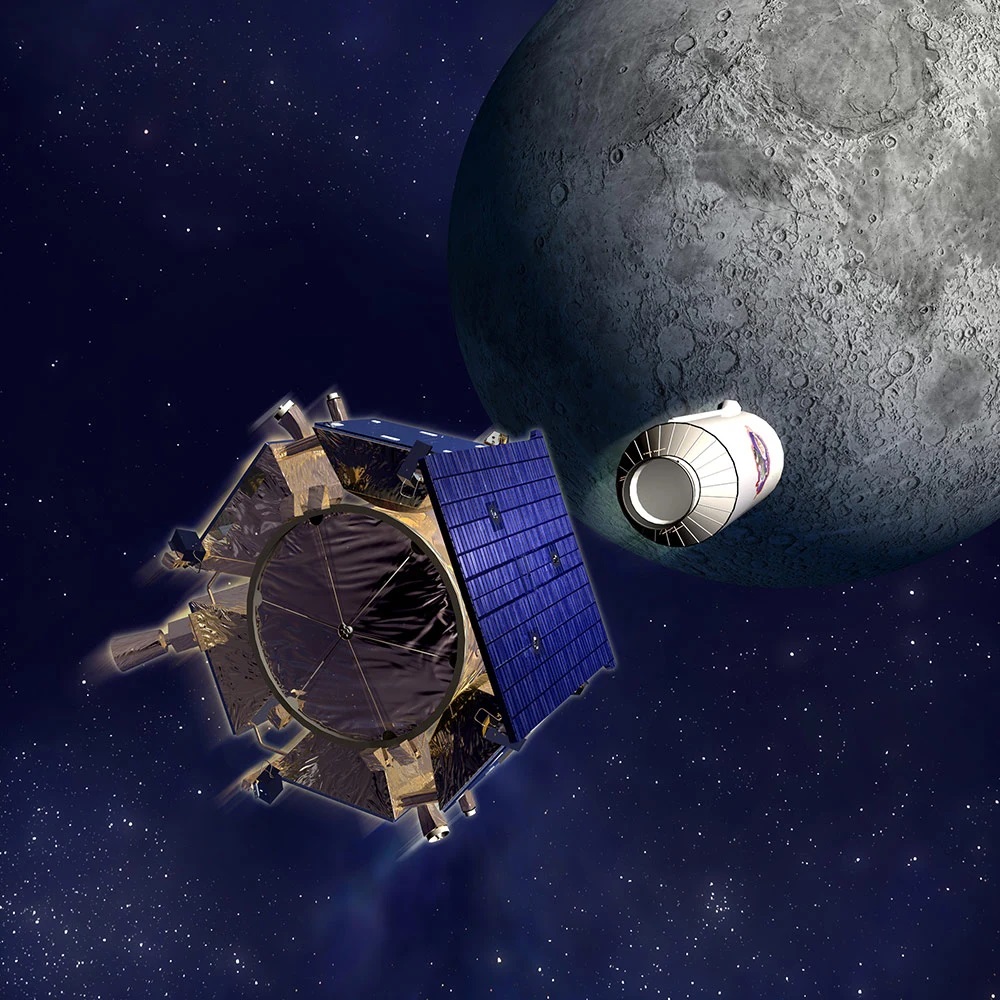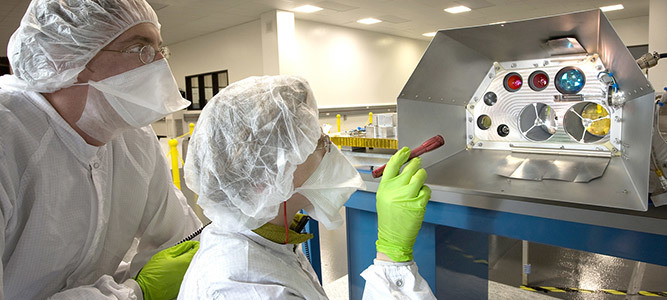Lunar Crater Observation and Sensing Satellite (LCROSS)
The search for water ice beneath the moon's permanently-shadowed craters.

The Search for Water on the Moon
NASA's next mission to the moon won't involve astronauts or merely orbit its surface. Prior to a human return to the moon, a mission is underway to build a satellite that will impact one of the moon's polar regions to search for water ice beneath its permanently-shadowed craters.
Working with NASA Ames Research Center on this unusually fast-paced project, Northrop Grumman is building and integrating the Lunar CRater Observation and Sensing Satellite (LCROSS). Production of several subsystems began soon after contract award in 2006.

Northrop Grumman-built LCROSS Satellite Impacts Moon
Oct. 9, 2009 – Astronomers and space enthusiasts worldwide cheered as the Lunar CRater Observation and Sensing Satellite (LCROSS) successfully impacted the moon's Cabeus crater. (Image credit: NASA)

Precise Impact
LCROSS, a secondary payload that will accompany the Lunar Reconnaissance Orbiter to the moon, consists of two components – the upper stage 4,400-pound (2,000-kilogram) rocket booster and a smaller, one-ton (1,000-kilogram) shepherding spacecraft. On approach to the moon, the shepherding spacecraft will position the upper stage for a precise impact, then separate and perform a braking maneuver to observe at close range the upper stage's impact into the moon.
The blow, anticipated to gouge a crater approximately 16 feet (five meters) deep and one-third the size of a football field, will send a 1,100-ton (1,000-metric-ton) plume as high as 22 to 25 miles (35 to 40 kilometers). Cameras and sensors will monitor LCROSS' debris plume. The shepherding spacecraft will then fly through it, observing and characterizing the plume to assess the possible existence of hydrated minerals, ice crystals, and hydrocarbons.
Minutes after the first impact, the shepherding spacecraft will plummet into the moon as well, creating a second opportunity at a different site to study the lunar soil through the sensors of other orbiting and ground-based telescopes.
If water ice could be found in sufficient quantities, the reserves could be converted to oxygen, drinkable water or even rocket fuel, making a lunar base for returning astronauts possible.
LCROSS is the first mission to use the EELV Secondary Payload Adapter (ESPA) ring as the primary structure for a fully-functioning, free-flying secondary spacecraft. The ESPA ring allows the LCROSS spacecraft to be inserted between a primary payload and its launch vehicle at low cost. The ring also provides the low-risk option for launching a constellation of spacecraft by stacking multiple LCROSS spacecraft on a single EELV.
Media Contact
William Furlong
(310) 814-8395